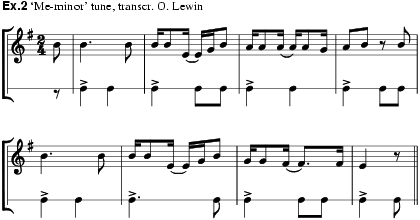
A style of music, dance and song of the southern and eastern Caribbean. Its main development has been in Trinidad alongside the evolution of Carnival celebrations there. Its origins go back to the gayup, a West African work song brought to the West Indies by plantation slaves, with a call and response structure and a lead singer called a chantwell (chantuelle, shantrelle, shantwell). When sung at competitive events the gayup often had two sections, the first celebrating victory and the second pouring scorn on the losers; both features are still found in calypso performances, as is the call of ‘kaiso’, a West African cry of encouragement (the word cayso was used for early forms of calypso).
A history of territorial struggle and the defiance of colonial authority lies within calypso. In the days of slavery Carnival was a time of rival celebrations among planters and slaves; the French planters maintained the Catholic tradition of celebrating Lent with masquerade balls and processions, while the slaves, with their permission, set up alternative processions based on West African end-of-harvest celebrations. From this came the tradition of a torchlit procession called canboulay (from Fr. cannes brûlées) at midnight on Shrove Tuesday. With emancipation in 1834 elements from the two forms of Carnival merged; the masquerades became part of street processions and the gayup became calypso. Other influences on calypso were the early ‘cariso’ and ‘caliso’, improvised songs for pre-emancipation Creole drum dances such as the ‘belair’ and the ‘old kalenda’, as well as the ‘bongo’ wake dance and the ‘paseo’ of Venezuela. With English the language of political control in Trinidad in the 19th and early 20th centuries, French Creole was viewed by the authorities as subversive. Calypsos, sung wholly or partly in French Creole, became associated with kalendas (kalindas), the activities of stick-fighting batoniers whose combats were accompanied by percussion and boasting songs, with chantwells egging on and commenting on the action. By the 1870s large bands of stick-fighters marched against each other at Carnival time, asserting their neighbourhood identities and territorial dominance. The role of singer gradually became separate from that of the parading bands. By the 1930s competing teams of singers were performing in ‘calypso tents’, with new topical compositions each year; each session ended with a verbal ‘war’ in which singers in turn improvised stanzas glorifying themselves and disparaging their rivals. Although this tradition is no longer practised, some sound recordings were made. Prizes are still given to the best calypsos each year at the Dimanche Gras show on the Sunday before Lent.
Musically calypso resembles the Brazilian samba; it is in duple metre, well suited to Caribbean ‘jump up’ dancing and Carnival road marches (ex.1). Most modern calypsos are in the major mode; earlier ones were slower and tended to be in minor mode (locally called ‘me-minor’ calypsos) (ex.2). Many have choruses involving enthusiastic group participation. Calypsos are typically played by steel bands, with groups of up to 150 pans accompanying Carnival street dancing, and smaller steel bands or dance band instruments playing for smaller groups on streets and for indoor dancing. From the 19th century calypso lyrics functioned as oral newspapers, with social and political comment, satirical treatment of scandal and topical themes. The words are witty with much double entendre. In keeping with the Carnival tradition of the reversal of power structures and hierarchies, calypsonians adopted sobriquets symbolizing their ability and status, for example the ‘Tiger’ (Neville Marcano) and, later, the ‘Mighty Sparrow’ (Slinger Francisco). Until the mid-20th century calypso lyrics remained largely local in subject-matter, but with the arrival in Britain of emigrants from the West Indies such calypsonians as ‘Lord Kitchener’ (Aldwyn Roberts) began to include international themes. Historical recordings of calypso include Trinidad Loves To Play Carnival: Carnival, Calenda and Calypso 1914–39 and History of Carnival: Christmas, Carnival, Calenda and Calypso from Trinidad 1929–39 (both in Matchbox Calypso Series MBCD 301–2, 1993, with disc notes by John H. Cowley).


JAN FAIRLEY